Last Chance to Catch NYC's Holiday Notalgia Train
We met the voices of the NYC subway on our nostalgia ride this weekend!


Sunset Park is one of Brooklyn’s most culturally diverse neighborhoods. Originally a center for Scandinavian and Polish immigrants, with particularly large Norwegian and Finnish demographics, Sunset Park now includes major enclaves of Chinese and Hispanic residents. Sunset Park was originally settled by the Canarsee, and the first European settlement occurred in 1636, after which Dutch settlers moved in. The Dutch towns of Brooklyn and New Utrecht were established in what would become Sunset Park, and the original Dutch roads would later be used during the Battle of Long Island during the American Revolution. Today, Sunset Park is a mix of bustling commercial avenues and historic rowhouses dating back to the 1890s. Here is our guide to 11 secrets of Sunset Park!
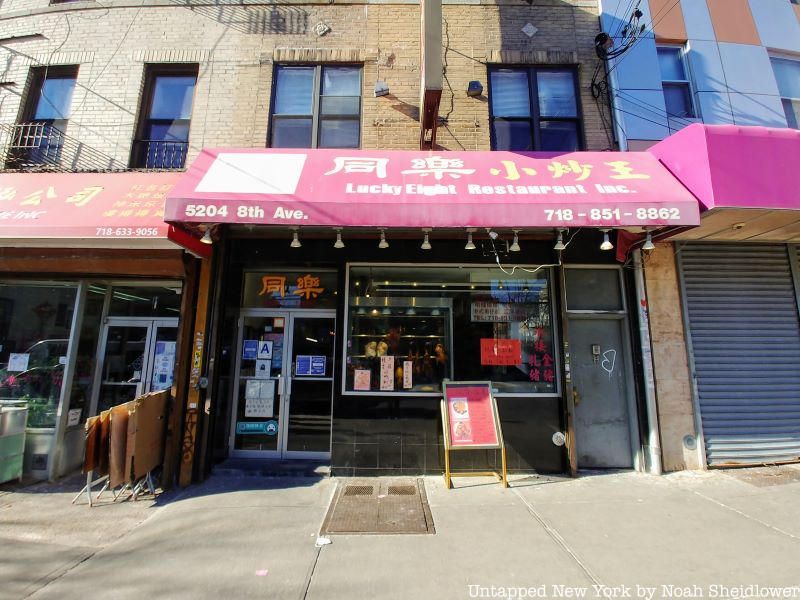
With one of the largest Chinatowns in New York, Sunset Park is often seen as the least touristy of New York’s three main Chinatowns. Sunset Park, with an Asian population of over 44,000, has quickly grown into a solidified and united Chinatown. The community is particularly known for its Fuzhounese population, many of whom moved from Manhattan’s Chinatown in the 2000s. Sunset Park’s Chinatown is often considered the fastest-growing Chinatown in New York City, with businesses opening along Seventh and Eighth Avenues primarily between 50th and 60th Streets. Though, according to The New York Times, the first year of the pandemic was “disastrous” with a lack of tourism and anti-Asian sentiment.
If you’re looking for a taste of Chinese cuisine, there are plenty of great restaurants in Sunset Park to try. Known for its simple menu, minimal decor, and fantastic food, Kai Feng Fu offers a variety of dumplings like pork and leek, chicken and mushroom, and vegetable, as well as fluffy pork buns and a selection of noodle soups made with thick udon-style noodles. The unassuming Hong Kong Dim Sum offers a selection of rice rolls as well as congees for a quick breakfast. For a taste of Fuzhou, hole-in-the-wall Wei Mei Xian specializes in gigantic steamed pork buns filled with a delectable BBQ pork filling. Also serving street food-style Fuzhounese cuisine, Wan Zhong Wang serves pork dumplings that have a translucent skin as well as peanut butter noodles and fish ball soup.
Sunset Park has a number of Yunnanese restaurants specializing in cuisine from China’s west, including Yun Nan Flavor Garden known for Crossing the Bridge rice noodles with chicken, vegetables, and quail egg. For dim sum, eateries like the extremely popular East Harbor Seafood Palace, Golden Imperial Palace, and Open Rice serve a variety of classic dim sum delicacies.
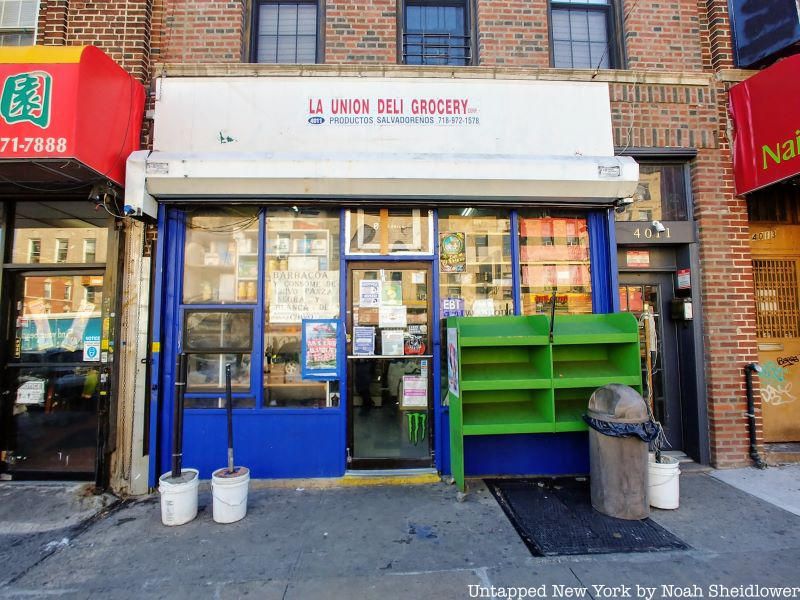
Although a handful of Puerto Ricans lived in Sunset Park around the 1920s working in maritime jobs, redlining and white flight led to major Puerto Rican immigration to the neighborhood in the 1950s and ’60s. Many Puerto Ricans were pushed away from their communities in East Harlem, the Upper West Side, and the Lower East Side because of urban renewal projects. Many families saw economic opportunities in Sunset Park, but industrial closures around that time made jobs increasingly scarce. Redevelopment efforts, though, and overall cheaper rents led many Hispanic families to settle in the area in the 1960s and 1970s; by 1980, the Hispanic population was half of Sunset Park’s total population. This included recent immigrants from Mexico, Cuba, the Dominican Republic, El Salvador, and Ecuador.
Many of these families opened businesses over the last three or so decades primarily along Fourth, Fifth, and Sixth Avenues. Among the most popular spots are Tacos Matamoros, known for its rather affordable tacos, Tacos El Bronco, and Restaurant El Maguey. Gran Villa Restaurant serves up some of the best Salvadoran pupusas in the area, while La Isla Cuchifrito is a popular Puerto Rican restaurant. For a taste of the Dominican Republic, head to Castillo de Yaque, while similarly named Castillo is a must-try for Ecuadorian fare.
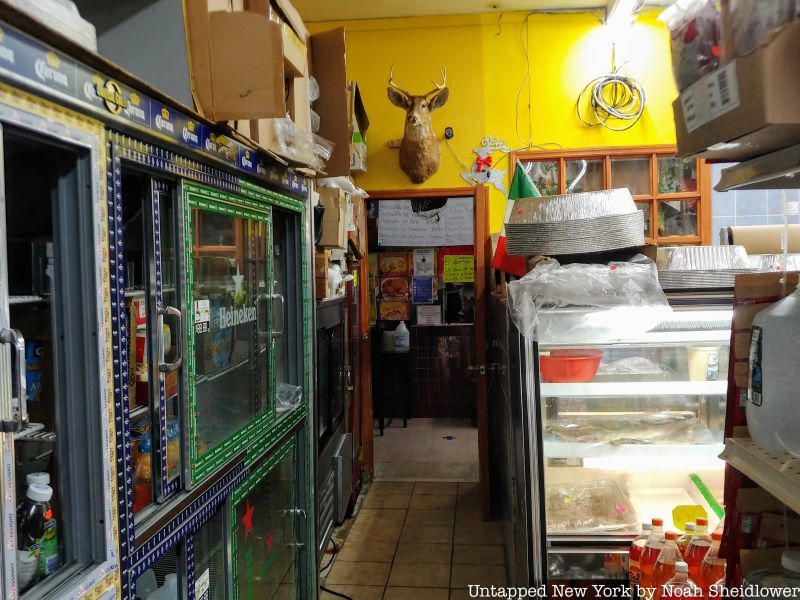
On Fifth Avenue right by the entrance to Sunset Park is Mi Pequeño Chinantla, a Mexican place that might be hard to find without directions. Avid New York foodies may remember Lhasa Fast Food in Jackson Heights, located in the back of a phone store. This Mexican spot is quite similar, located in the back of La Union Deli by a small door. The entrance at the back of the very narrow shop, though, is hard to miss after seeing a large taxidermied deer above the door.
Mi Pequeño Chinantla serves up authentic tamales, guisado, barbacoa, and picaditas (corn cakes with queso fresco and salsa). The menu is handwritten and changes daily, often not reflecting what’s written on the piece of oaktag. The food mirrors what is commonly eaten in the village of Chinantla in Puebla state in east-central Mexico. While there, make sure to check out the Mexican knickknacks and taxidermied animals, including a bobcat by the entrance.
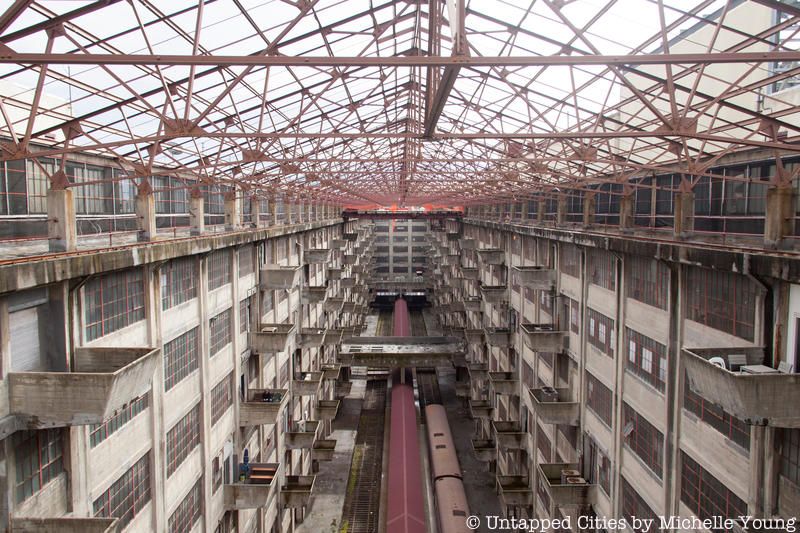
The Brooklyn Army Terminal is a 4 million square foot complex built at the end of World War I on the west of Sunset Park. It was designed by Cass Gilbert, architect of the Woolworth Building and U.S. Customs House, and it was used as a supply base and military depot during both World Wars. Now, the terminal serves as an NYC Ferry stop, as well as a commercial center, but during World War II it was the United States’ largest military supply base. Much of the original architecture and features are still present in the NRHP-designated site, although some renovations were conducted to repurpose sections.
The main atrium of Building B is where freight trains would pull in and unload their cargo. The terminal was also a point of departure for soldiers going off to fight. Decommissioned in 1964, the terminal now hosts flavored ice-cream cone makers and 3D-printed garment producers. Most famously, Elvis Presley was deployed from the Brooklyn Army Terminal. Untapped got a look at the basement, which is not usually open to the public, a few years ago during a tour. The roof of the annex was a formerly empty space now transformed into a food manufacturing hub.
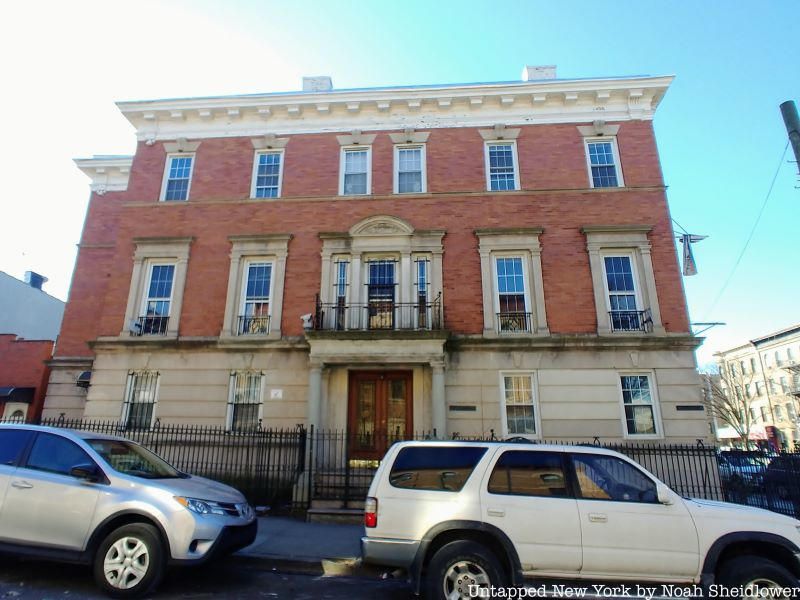
Sunset Park has just one remaining mansion, the Dr. Maurice T. Lewis House located at 404 55th Street, and it isn’t going anywhere. The Landmarks Preservation Commission named the mansion a New York City Landmark in 2018, saving it from demolition to make way for apartments. The home was built in 1907 and designed by Richard Thomas Short for Dr. Lewis, the president of the Bay Ridge Savings Bank. Richard Thomas Short mostly designed structures in Manhattan as part of the firm Harde & Short, which designed the Red House on the Upper West Side. Lewis lived in the home until his death in 1931
Following Lewis’s death, the home was occupied by Sonya Monen, the first female physician to serve in the Coast Guard Reserve’s SPARS division during World War II. Today, the home is located within the Sunset Park South Historic District.
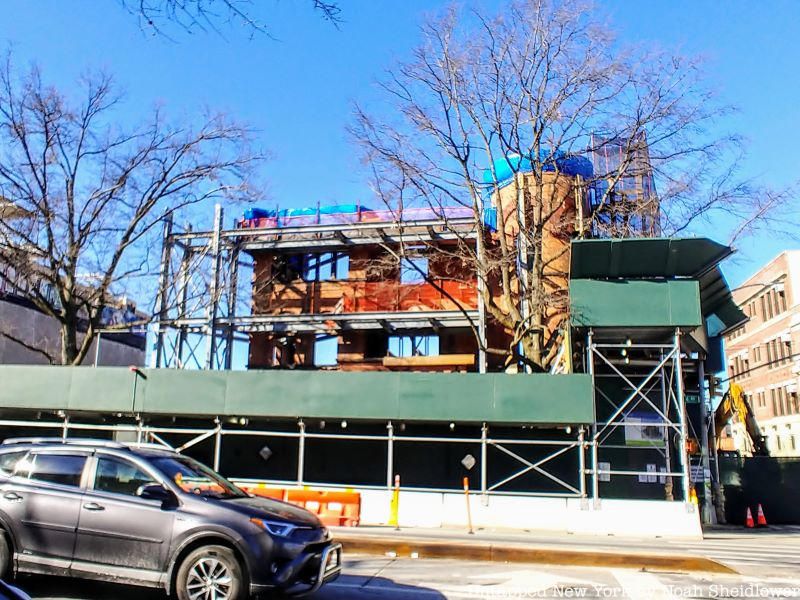
On the corner of 4302 Fourth Avenue, once Sunset Park’s 68th Precinct, is what remains of a historic castle-like structure with a fascinating architectural history. The historic police station and stable, formerly of the 18th Police Precinct, were completed in 1892 in a style reminiscent of Byzantine architecture. The station house is a three-story brick building in Romanesque Revival style that features carved stone details. However, much of this building is now gone, even though it is a New York City Landmark (and has been for almost 40 years).
Since the 1970s, the building changed hands a few times, serving as the home of the Brooklyn Chinese-American Association and the Sunset Park Music Group. Yet the building has continued to decay, and the city has issued plenty of fines against the not-for-profits, which have done little to restore the building. Amid rubble are graffiti and other signs of neglect, and most of the brick has fallen. Just a tower and some other sections are stabilized, and construction is now underway on a new elementary school that will incorporate parts of the former precinct house.
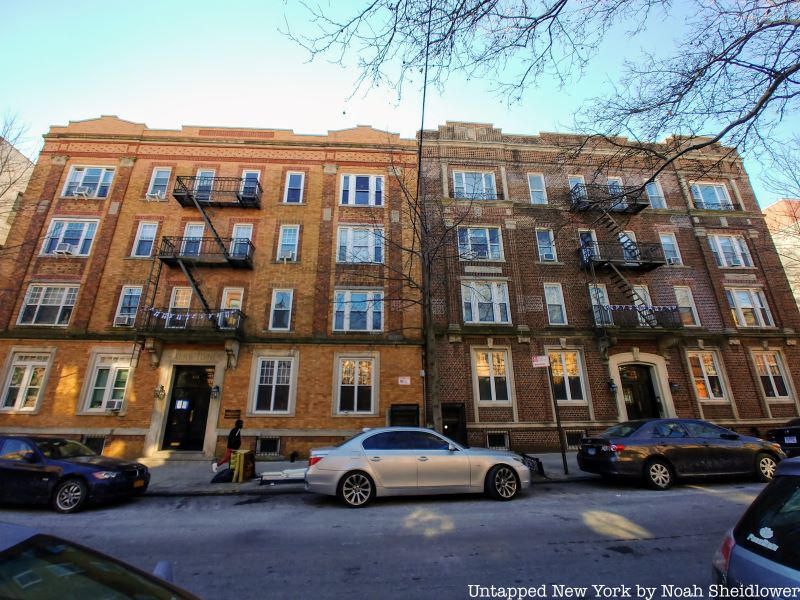
Before Sunset Park’s Chinatown or Little Mexico, Finntown was one of the first ethnic enclaves in the area. The neighborhood had about 10,000 Finnish residents at its peak, with a Finnish-language newspaper and 20 co-ops. The Imatra Society of Brooklyn Finnish immigrants began as a workers’ association and soon after became a community organization in support of Finnish immigrants. A block of 40th Street was nicknamed “Finlandia Street” in 1991.
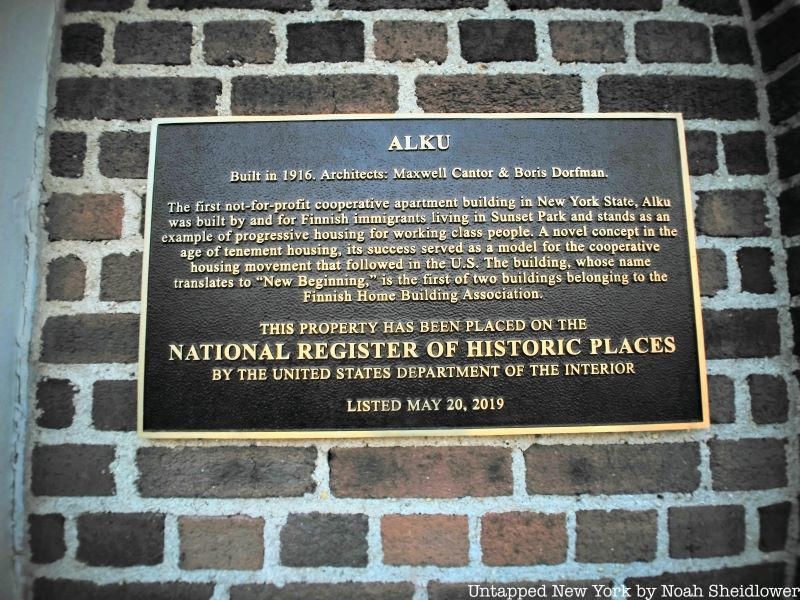
Much of the history of Finntown has been forgotten, but a handful of buildings remain. Perhaps the most notable are the Alku and Alku Toinen apartments built in 1916 on 43rd Street. The buildings, which translate to “Beginning” and “Beginning Second,” were the first nonprofit housing cooperatives in the entire city. The buildings were constructed in the Arts and Crafts style, and at first, the buildings were regulated by agricultural cooperative standards. Building residents created five principles to govern the building: democratic control, a nonprofit structure, voluntary membership with individual economic participation, and concern for community.
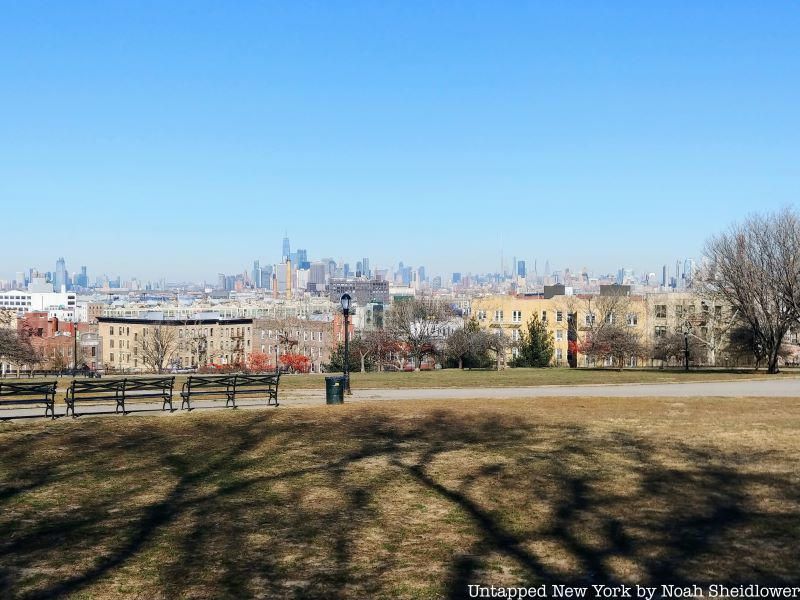
Sunset Park is a confusingly named public park within the neighborhood of Sunset Park located between 41st and 44th Streets and 5th and 7th Avenues. From the top of the park, visitors can see the full downtown Manhattan skyline. Today, the park includes fields, an Art Deco-style pool and playhouse, and walking paths. But Sunset Park also used to have a six-hole golf course and many other features.
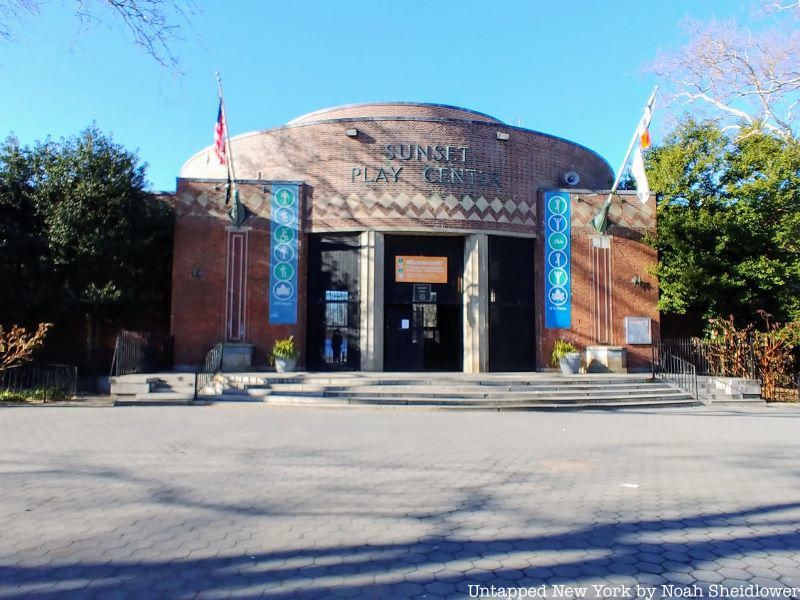
The plot of land that would become Sunset Park, which at the time also boasted some of the best views of Manhattan, was acquired in 1891 by Brooklyn. Many Polish and Scandinavian immigrants would meet at Sunset Park, and a golf course was constructed in 1899 on the irregular terrain. A carousel and Neoclassical rustic shelter were also installed at the park, which grew in popularity with the construction of the Fourth Avenue subway nearby. By the time of the Great Depression, Robert Moses and the Works Progress Administration worked to create new parks and pools throughout the city, and a pool at Sunset Park was one of the original 11 built in 1935. The pool took the place of the golf course and carousel. Also found at the site were Native American artifacts from the time in which the Canarsee inhabited the land.
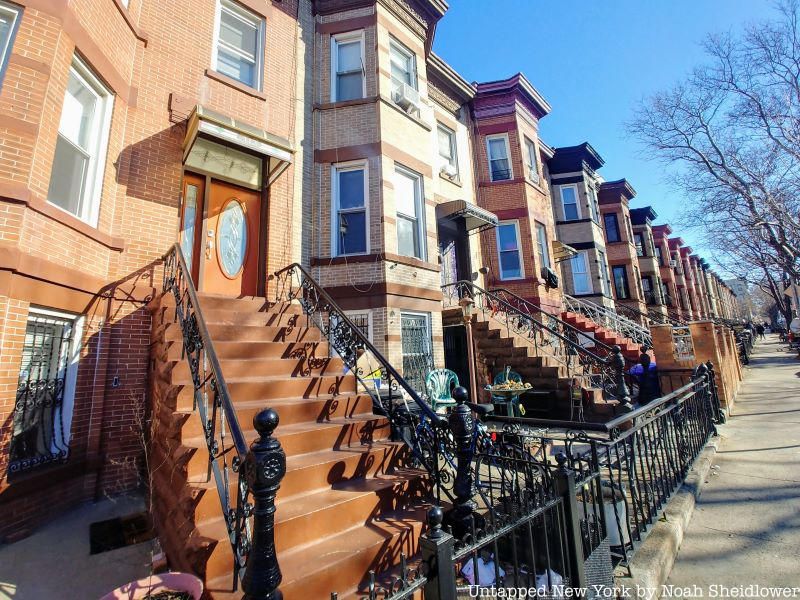
The Sunset Park Historic District is the largest urban historic district in the Northeast, roughly between 38th and 64th Streets bounded by Fourth and Seventh Avenues. The historic district is often subdivided into smaller sections, including the Sunset Park South Historic District along 54th through 59th Streets. Many streets within the historic district contain two-story-and-basement row houses constructed around the 1890s in styles including Queen Anne, Renaissance Revival, and Romanesque Revival.
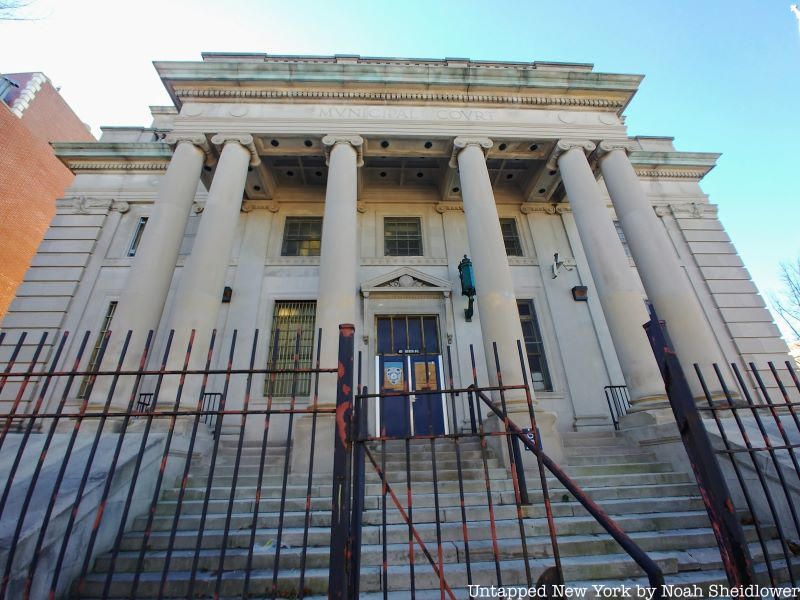
Among the notable buildings in the large historic district is the Sunset Park Courthouse, built in 1930-1931 in the Neoclassical style with Ionic columns and a limestone facade. Developers have posed a threat to some of the row houses, many of which feature rounded facades and ornate roof elements. While Fourth and Fifth Avenues are bustling with commerce, these streets are charming and historic, boasting various architectural styles.
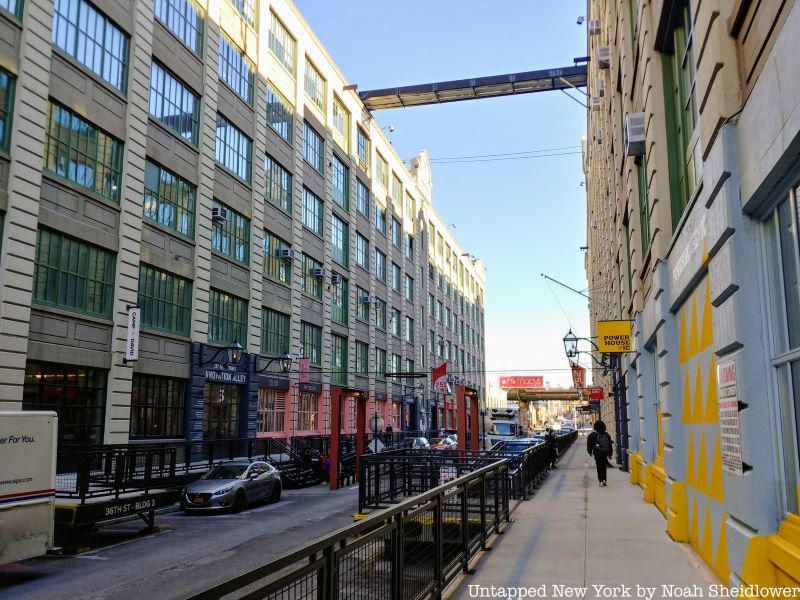
Industry City is perhaps one of Brooklyn’s most touristy and popular areas, known for its dozens of eateries, specialty shops, and galleries. Located in the Upper New York Bay waterfront of Sunset Park, Industry City has been prized for its Japan Village, a film studio, Brooklyn institutions including Sahadi’s, and stores like St. Mark’s Comics. But the Brooklyn destination was not always so sought-after. The area and Industry City itself was in major decline for three decades after World War II, after which it was converted into a federal prison and shopping mall.
Decades before this redevelopment, what was then known as Bush Terminal was constructed in the late 1800s. Bush Terminal was the site of its namesake company, which was known for transportation, warehousing, and manufacturing. The Bush Terminal Railroad Company constructed a railroad that ran on the streets along Brooklyn’s waterfront. Bush Terminal was used as a U.S. Navy base during World War I and returned to private ownership shortly after, and 276 tenants were evicted from the buildings. However, by 1928, Bush Terminal had 35,000 workers, and operations remained relatively stable during the Great Depression despite an increasing vacancy rate. The federal government later took control of some buildings in the terminal during World War II, after which the local economy began to fail. The decline of the port hit Bush Terminal hard, though garment manufacturing was particularly successful on-site during the 1980s.
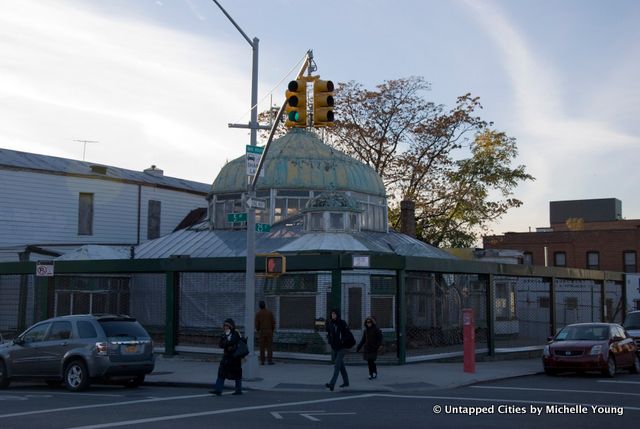
Green-Wood Cemetery, whose southwestern portion is located in Sunset Park, may be known for its catacombs, Gothic Revival entrance, and notable burials including Jean-Michel Basquiat. One perhaps lesser-known site in the cemetery is the Weir Greenhouse, located across the street from the main entrance in Sunset Park, which dates back to 1895. The greenhouse, made of glass, copper, iron, and wood, was designed by architect G. Curtis Gillespie. James Weir, Jr., a Brooklyn florist, built the greenhouse for his business of over 50 years, which he operated with his son and grandson.
The greenhouse is the only Victorian commercial greenhouse known to be extant in New York City, according to a New York City Landmarks Preservation report. The rectangular greenhouse features an octagonal cupola, above which is a sign that reads “WEIR.” The greenhouse had begun to fall into disarray after it was sold in 1971 to the McGovern family, but it was purchased four decades later in 2012 and has undergone major restoration efforts.
Next, check out the Top 12 Secrets of Cobble Hill!
Subscribe to our newsletter